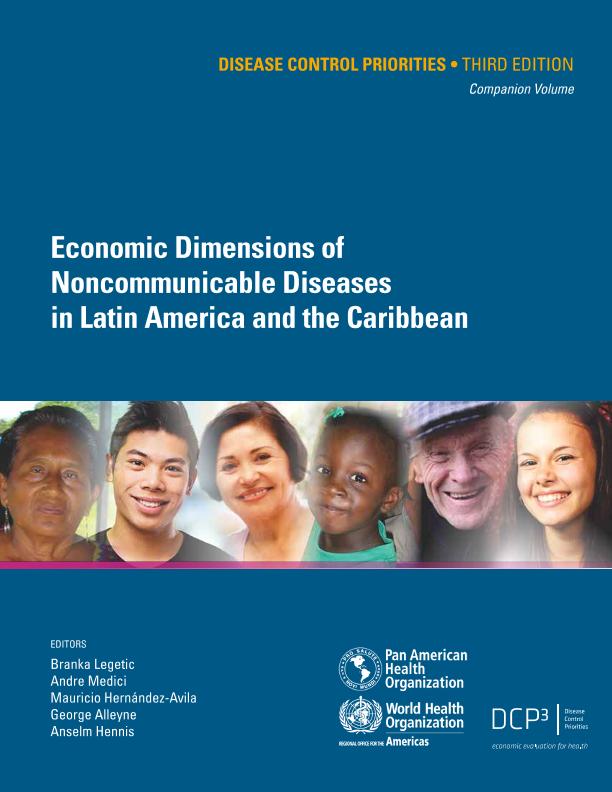Mostrar el registro sencillo del ítem
dc.contributor.author
Watkins, David
dc.contributor.author
Poggio, Rosana

dc.contributor.author
Augustovski, Federico Ariel

dc.contributor.author
Brouwer, Elizabeth
dc.contributor.author
Pichón-riviere, Andres

dc.contributor.author
Rubinstein, Adolfo Luis

dc.contributor.author
Nugent, Rachel
dc.contributor.other
Legetic, Branka
dc.contributor.other
Medici, Andre
dc.contributor.other
Hernández Avila, Mauricio
dc.contributor.other
Alleyne, George
dc.contributor.other
Hennis, Anselm
dc.date.available
2022-05-16T19:14:14Z
dc.date.issued
2016
dc.identifier.citation
Watkins, David; Poggio, Rosana; Augustovski, Federico Ariel; Brouwer, Elizabeth; Pichón-riviere, Andres; et al.; The cost-effectiveness of interventions and policies for noncommunicable diseases and their risk factors in the Latin America and Caribbean region: A systematic literature review; Pan American Health Organization; University of Washington; 2016; 87-106
dc.identifier.isbn
978-92-75-11905-1
dc.identifier.uri
http://hdl.handle.net/11336/157671
dc.description.abstract
Noncommunicable diseases (NCDs) are the leading cause of death in the Americas, with cardiovascular disease (CVD) responsible for 45 percent of those deaths (Hospedales, Barcelo, Luciani, and others 2012). In the Latin America and Caribbean (LAC) region, it is estimated that from 1990 until 2020, death from CVD, including coronary heart disease (CHD), will increase by approximately 145 percent for both men and women. That compares with an increase of 28 percent for women and an increase of 50 percent for men in developed countries during the same period (Yusuf, Hawken, Ounpuu, and others 2004). The countries and territories of LAC have pioneered a strong and multisectoral response to NCD prevention and control, spearheaded by the leadership of the Caribbean countries in the 2011 United Nations HighLevel Meeting on NCDs, and continuing with the recent creation of the Healthy Latin America Coalition, which advocates for health promotion and NCD prevention. The Pan American Health Organization (PAHO) has promoted and facilitated member countries’ activities in surveillance, policy development, and guidelines for NCD prevention. The PAHO Regional Strategy and Plan of Action for the Prevention and Control of Chronic Diseases was adopted in 2012, with explicit attention to the development and economic importance of NCDs, and to the need for multisectoral involvement (PAHO 2012). In this environment, it is unsurprising that a large number of economic studies about NCDs have been produced in the LAC region. This article reviews the literature from LAC on the cost-effectiveness of interventions and policies to control and prevent NCDs. Many LAC countries use the World Health Organization (WHO) threshold to define an intervention as being costeffective, that is, whether the cost of a disability-adjusted life year (DALY) or quality-adjusted life year (QALY) is less than one times the country’s gross domestic product (GDP) per capita per life year. Most GDPs per capita in LAC range between U$S4,000 and US$12,000 (Sachs 2001). The literature on this issue reflects several characteristics unique to the LAC region: the relatively robust availability of health condition and risk factor data; a strong political and advocacy environment for population policy implementation; and an active research network on economic and public health issues, particularly on cost-effectiveness methods. As a result, this review identified a large number of relevant articles, which enables interesting comparisons across time and geography.
dc.format
application/pdf
dc.language.iso
eng
dc.publisher
Pan American Health Organization; University of Washington
dc.rights
info:eu-repo/semantics/openAccess
dc.rights.uri
https://creativecommons.org/licenses/by-nc-sa/2.5/ar/
dc.subject
INTERVENTIONS
dc.subject
NCD
dc.subject
RISK
dc.subject
LATIN AMERICA
dc.subject.classification
Epidemiología

dc.subject.classification
Ciencias de la Salud

dc.subject.classification
CIENCIAS MÉDICAS Y DE LA SALUD

dc.title
The cost-effectiveness of interventions and policies for noncommunicable diseases and their risk factors in the Latin America and Caribbean region: A systematic literature review
dc.type
info:eu-repo/semantics/publishedVersion
dc.type
info:eu-repo/semantics/bookPart
dc.type
info:ar-repo/semantics/parte de libro
dc.date.updated
2022-04-21T16:24:12Z
dc.journal.pagination
87-106
dc.journal.pais
Estados Unidos

dc.description.fil
Fil: Watkins, David. University of Washington; Estados Unidos. University of Cape Town; Sudáfrica
dc.description.fil
Fil: Poggio, Rosana. Consejo Nacional de Investigaciones Científicas y Técnicas; Argentina. Instituto de Efectividad Clínica y Sanitaria; Argentina. Universidad de Buenos Aires; Argentina
dc.description.fil
Fil: Augustovski, Federico Ariel. Consejo Nacional de Investigaciones Científicas y Técnicas; Argentina. Instituto de Efectividad Clínica y Sanitaria; Argentina. Universidad de Buenos Aires; Argentina
dc.description.fil
Fil: Brouwer, Elizabeth. University of Washington; Estados Unidos
dc.description.fil
Fil: Pichón-riviere, Andres. Consejo Nacional de Investigaciones Científicas y Técnicas; Argentina. Instituto de Efectividad Clínica y Sanitaria; Argentina
dc.description.fil
Fil: Rubinstein, Adolfo Luis. Consejo Nacional de Investigaciones Científicas y Técnicas; Argentina. Instituto de Efectividad Clínica y Sanitaria; Argentina. Universidad de Buenos Aires. Facultad de Medicina; Argentina
dc.description.fil
Fil: Nugent, Rachel. University of Washington; Estados Unidos
dc.relation.alternativeid
info:eu-repo/semantics/altIdentifier/url/https://iris.paho.org/handle/10665.2/28501#:~:text=%5B...%5D-,Economic%20Dimensions%20of%20Noncommunicable%20Diseases%20in%20Latin%20America%20and%20the,system%20responses%20to%20these%20changes.
dc.conicet.paginas
159
dc.source.titulo
Economic dimensions of noncommunicable diseases in Latin America and the Caribbean
Archivos asociados
